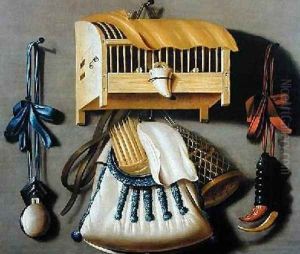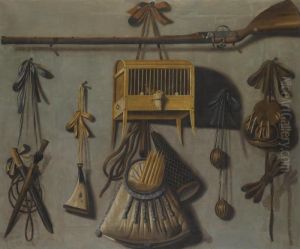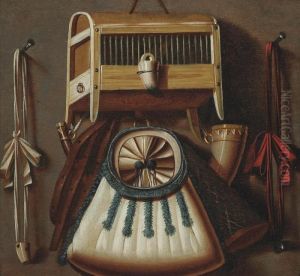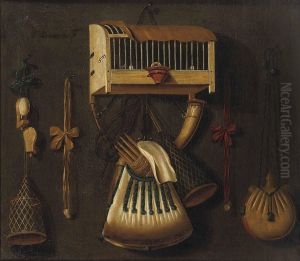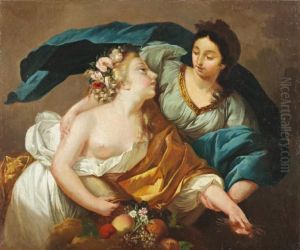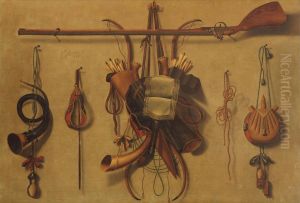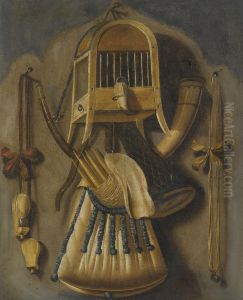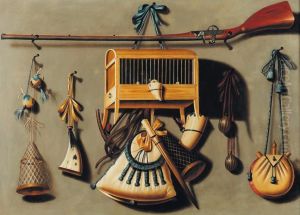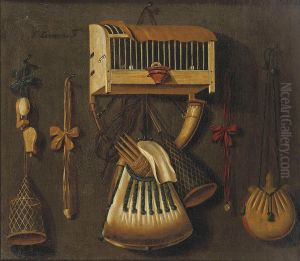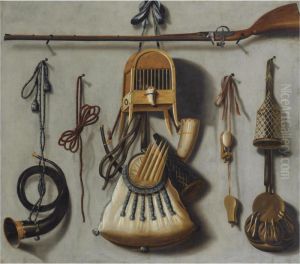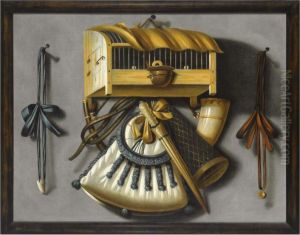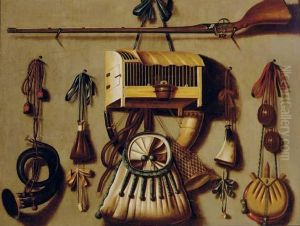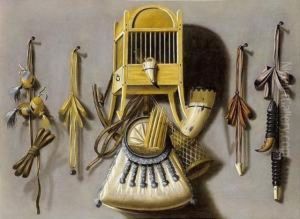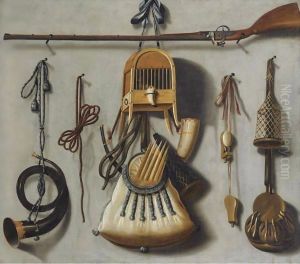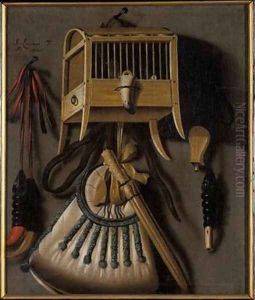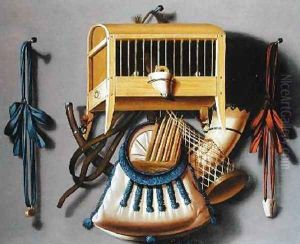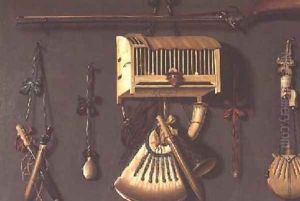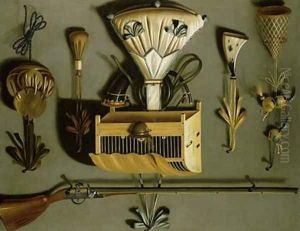Johannes Leemans Paintings
Johannes Leemans was a Dutch Golden Age painter, born in The Hague in 1633. He was known for his still life paintings, particularly those depicting hunting spoils and weaponry, which were a popular genre in the 17th century Netherlands. Leemans's work is characterized by a meticulous attention to detail and a talent for rendering textures and surfaces in a realistic manner.
Leemans was trained by his brother Anthonie Leemans, who was also an accomplished still life painter. Johannes developed his own style, however, which was distinct from his brother's. His compositions often featured hunting equipment, such as guns, powder horns, and game, arranged against a neutral background that allowed the objects to stand out. The influence of other still life artists, such as Willem van Aelst and Jan Davidsz. de Heem, can be seen in his careful arrangements and the quality of his brushwork.
Despite the high quality of his paintings, not much is known about Leemans's life. He appears to have spent most of his career in The Hague, where he was a member of the painter's guild. His works were mostly collected by Dutch patrons, and he never gained the international fame that some of his contemporaries achieved.
Johannes Leemans died in 1688, at the age of 55. Today, his paintings can be found in various museums and collections around the world, appreciated for their contribution to the still life genre and the Dutch Golden Age of painting. His legacy lives on as an example of the skill and precision that Dutch artists brought to the portrayal of everyday objects, elevating them to subjects worthy of fine art.
